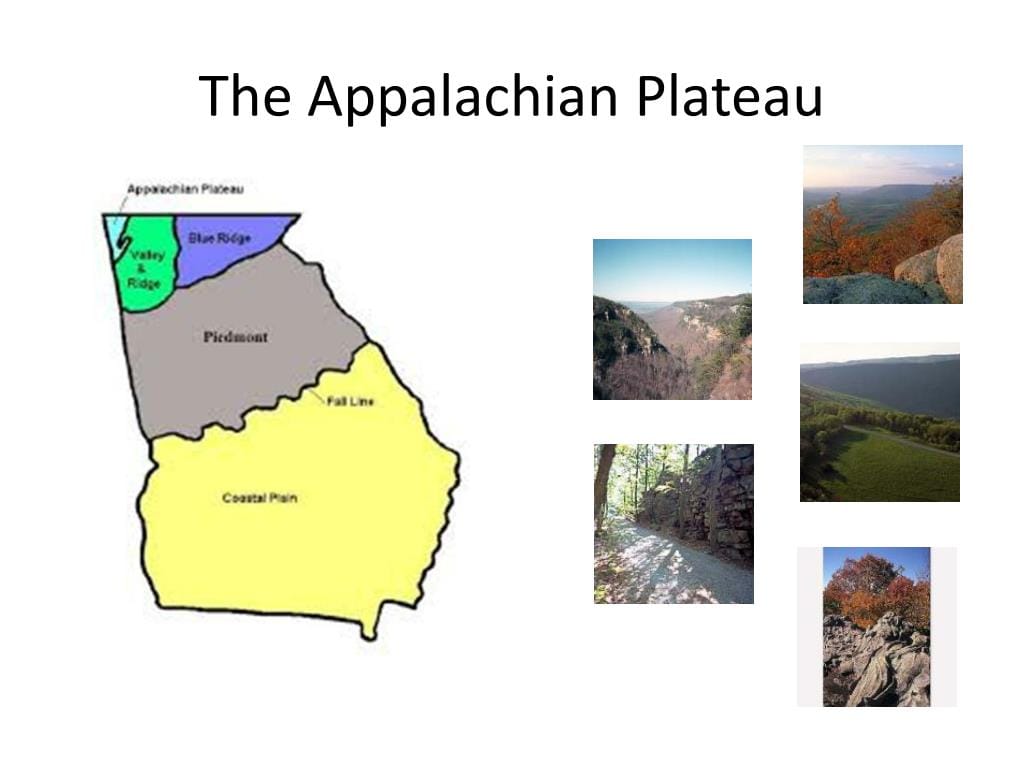Imagine traversing the rugged beauty of the Appalachian Plateau, a region where history intertwines with innovation. Transportation has indelibly shaped the Plateau’s story, from the ancient paths etched by Native Americans to the modern highways connecting us today. This journey through time reveals the profound impact transportation has had on the Appalachian Plateau’s growth, culture, and way of life.
From Trails to Turnpikes: A Transportation Legacy
The Appalachian Plateau, with its rolling hills and winding valleys, presented unique challenges for transportation. For centuries, the people of these mountains have demonstrated remarkable resilience, forging connections across this challenging terrain.
Long before cars and trains, Native American tribes navigated the landscape using an intricate network of trails through forests and along rivers. These paths, deeply rooted in their understanding of the land, weren’t mere conveniences; they were lifelines for trade, communication, and cultural exchange.
As settlers arrived, the need for more robust transportation systems grew. Imagine the sheer effort required to carve roads through dense forests and over steep mountainsides. This gradual process connected once-isolated communities and opened the region to new possibilities.
The arrival of the railroad marked a turning point. These iron horses, capable of traversing challenging landscapes, connected previously isolated communities to booming cities and bustling markets, integrating the Appalachian Plateau into the national fabric.
The construction of the Pennsylvania Turnpike stands as a testament to engineering ingenuity. Completed in 1940, this modern marvel sliced through the mountains, symbolizing progress and the region’s readiness to embrace the future.
Today, the Appalachian Plateau faces new challenges and opportunities, and its transportation systems continue to evolve. Interstate highways, like the I-73/74 corridor, serve as vital arteries for commerce, facilitating the movement of people and goods across vast distances and linking the region to the global economy.
However, the future of transportation in the Appalachian Plateau extends beyond simply building larger, faster roads. As environmental awareness grows, sustainable solutions are paramount. The region seeks to strike a balance between mobility and protecting its unique natural beauty.
Imagine electric vehicle charging stations dotting scenic byways or high-speed rail lines whisking travelers through breathtaking landscapes—all while minimizing their carbon footprint. These possibilities highlight the Appalachian Plateau’s commitment to developing a modern and environmentally responsible transportation system.
Reliable transportation, however, represents more than just getting from point A to point B; it’s about connecting people to opportunity. In a region where some communities still lack reliable internet access and other essential services, improved transportation infrastructure can help bridge the digital divide and create a more equitable future.
Challenges undoubtedly exist, including securing funding for major infrastructure projects and navigating complex political landscapes. Yet, the spirit of innovation and determination that defines the Appalachian Plateau offers hope. By working together, a future where the region’s transportation system continues to evolve, fostering economic growth, and enhancing the quality of life for generations to come is within reach.
Beyond Coal: The Most Common Jobs in Appalachia Today
While coal mining and timber have long been synonymous with Appalachia, the region’s economy is undergoing a transformation, giving rise to new job opportunities. Let’s delve into the evolving employment landscape of Appalachia:
- Healthcare is on the Rise: As the population ages, the demand for healthcare professionals is increasing, creating openings for nurses, medical assistants, and home health aides.
- Education Remains Strong: Schools and colleges require not only teachers but also support staff and administrators to ensure smooth operations.
- Tourism Offers Promise: With its stunning natural beauty, rich history, and vibrant culture, Appalachia is attracting visitors, leading to jobs in hospitality, recreation, and retail.
Traditional sectors like retail, manufacturing, and construction still provide employment opportunities. However, Appalachia faces challenges, including a higher unemployment rate compared to other parts of the country.
Despite these challenges, there’s a glimmer of hope. Communities are diversifying beyond traditional industries, encouraging new businesses, and investing in education and job training programs. These efforts suggest a brighter future for Appalachia’s workforce.
Unlocking the Appalachians: A Look at the Region’s Diverse Resources
Identifying just one main resource in the Appalachians is a difficult task as this mountain range is abundant in valuable assets, each playing a vital role in the region’s history and livelihood.
For generations, people have relied on the vast hardwood forests blanketing the Appalachians. These forests are a source of timber used for construction and furniture making. Furthermore, the fertile soil in many areas has allowed agriculture to thrive, providing sustenance and income for local communities.
Beneath the surface, the Appalachians harbor a wealth of minerals. Coal, in particular, has been central to the region’s story, fueling national industries for decades.
The intricate network of rivers and lakes crisscrossing the Appalachian landscape offers more than just scenic beauty. These waterways have served as vital transportation routes, sources of hydropower, and support a rich diversity of plants and animals.
In recent times, the allure of the Appalachians’ natural beauty and unique culture has drawn in a wave of tourism. This industry has become a significant economic force, offering alternative livelihoods for many.
It’s important to acknowledge the challenges accompanying this resource abundance. Balancing economic development with sustainable practices is crucial, and the Appalachians face a delicate balancing act as industries change and evolve.
From Garden Patch to Dinner Table: Exploring Appalachian Plateau Cuisine
The food of the Appalachian Plateau reflects the region’s history and deep connection to the land. Imagine a place where rolling hills, dense forests, and a self-sufficient way of life dictated the flavors on the table.
Before easy access to stores, people relied on their surroundings for sustenance. Wild game, such as venison, rabbit, and even squirrel, provided essential protein. Staples like corn, beans, and potatoes were cultivated, while foraging for wild ramps, mushrooms, berries, and nuts added unique flavors and textures to meals.
Winter presented a unique challenge—preserving food was not simply a matter of taste but of survival. Pickling, canning, smoking, and salting were more than preservation methods; they were techniques that added incredible depth of flavor, showcasing the creativity born from necessity.
While these traditional dishes are still cherished, a new generation of cooks is emerging, blending fresh, locally sourced ingredients with modern techniques. This evolution adds a contemporary twist to time-honored recipes.
Appalachian Plateau food is more than sustenance; it is a testament to resilience, resourcefulness, and a profound connection to the land. It’s a cuisine where history is savored in every bite, passed down through generations.
- Unveiling the Enigma: Mansoureh Khojasteh Bagherzadeh’s Public Appearances & Private Life in Iran - July 18, 2025
- Unveiling the Mystery: Mansoureh Khojasteh Bagherzadeh’s Husband: A Rare Glimpse into a Private Life - July 18, 2025
- Unveiling Masoud Khamenei’s Mother: Power, Influence, and Iran’s Future - July 18, 2025
















